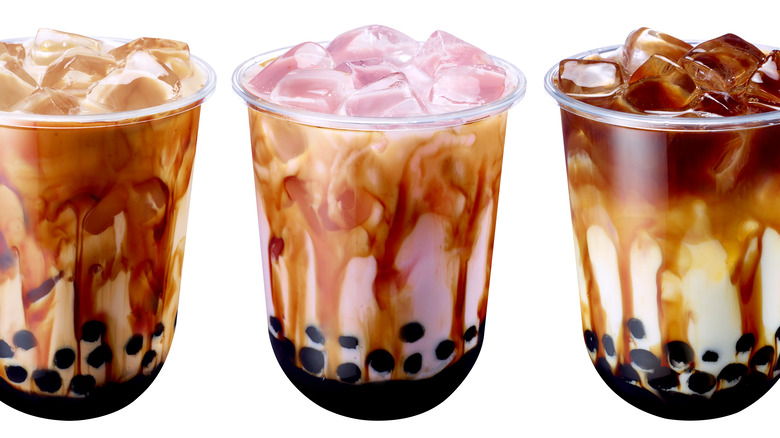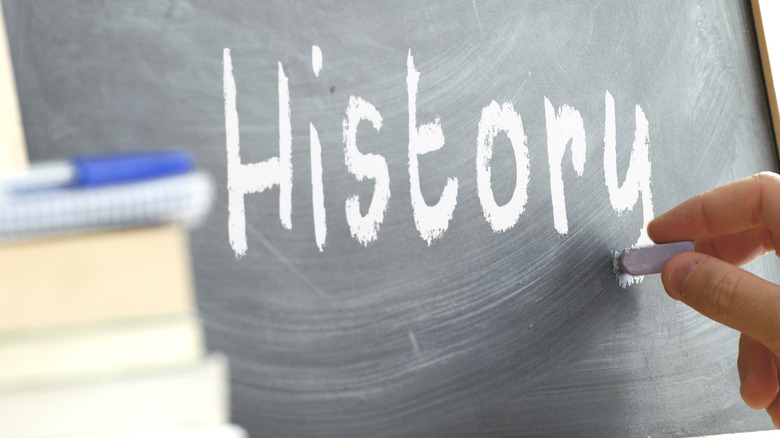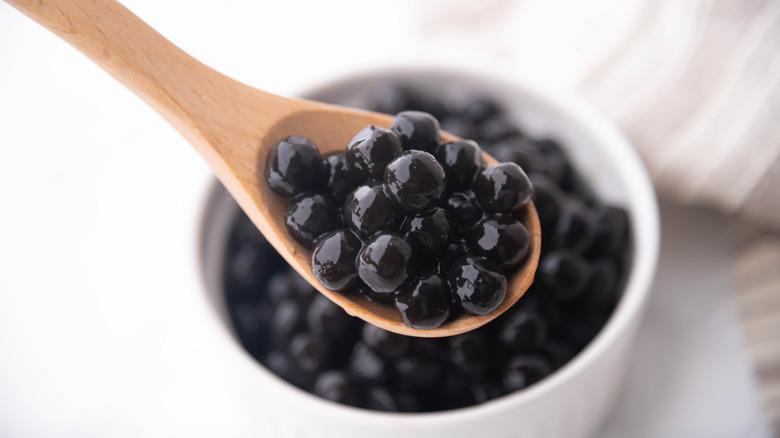The Surprising Reason Bubble Tea Is Called Boba
We're happy to report that as of this writing, bubble tea (also known as boba) appears to be enjoying its time in the sun. According to LA Weekly, boba made its way from Taiwan to Los Angeles — and eventually the rest of the U.S. — in the mid-2000s. While boba — a tea drink featuring large, edible "balls" made out of tapioca starch and commonly served with add-ins like milk — might have been a bit of a rarity in the mid-aughts, its popularity in the U.S. has become practically ubiquitous.
Whether you opt for the classic black milk flavor or something more adventurous, the treat-worthy beverage is just as fun to look at as it is to drink thanks to those chewy pearls. Not only are those smooth and chewy "bubbles" many people's favorite part of boba, but they're also where the drink gets its name. While the beverage itself is Taiwanese in origin, the word boba is actually borrowed from China.
Milk tea dates back to ancient times
While it's widely accepted that boba took off in the 1980s, some believe that the first iteration of the drink was invented decades earlier, in the late 1940s. According to CNN, a former bartender in Japan-occupied Taiwan named Chang Fan Shu launched the idea in his shop after he introduced a cold tea drink that was hand-shaken in cocktail shakers. The agitation caused small air bubbles to foam on top of the tea, which inspired Chang to call it "foam tea." There were no tapioca pearls in Chang's creation, but CNN notes that foam tea signified a new era of beverages in post-World War II Taiwan — ones that were served cold and sipped for pure pleasure.
Others, like University of Michigan professor Miranda Brown, argue that a variation of bubble tea was enjoyed in Middle-period China. Brown tells Eater that people in the Tang Dynasty, which lasted from 618 AD to 907 AD, often doctored up their black tea with butter, cream, milk, and sometimes even salt and sesame, in the tradition of northern Chinese nomads. Brown adds that Europeans — the British in particular — "reintroduced milk tea back into the Chinese diet" in the 19th century.
Fast forward to the 1980s, and tapioca pearls were an almost inevitable cherry on top of boba's evolutionary sundae. As Eater notes, "jelly-like starch desserts" like sago pearls were already popular in China and Southeast Asia. As for who made the official call to put the pearls in the drink? That point is somewhat disputed.
Boba is Chinese slang for the word 'breasts'
If we're to believe the origin story relayed by CNN – which is only one of several theories out there on the Internet — the alleged progenitor of boba tea, Chang Fan Shu, coined his green tea variation with the name "pearl green tea." The reason? The tapioca balls reminded him of the pearl necklaces his mother used to wear. (Indeed, you'll often still find the words "black pearl" or "green pearl" on bubble tea menus, which could be considered a nod to Chang, albeit indirectly.) After a few years on the scene, however, the drink took on a different title.
In an article for Food & Wine, cookbook author and food celeb Priya Krishna explains that consumers started calling the drink by the name boba, a Chinese slang term for "breasts," simply because of the shape of the tapioca balls. Unoriginal? Maybe. Fun? Yes. The cheeky name applies not only to tapioca pearls but also to fruit jelly or red bean pearls, which are common replacements for those who aren't wild about the texture of tapioca.


